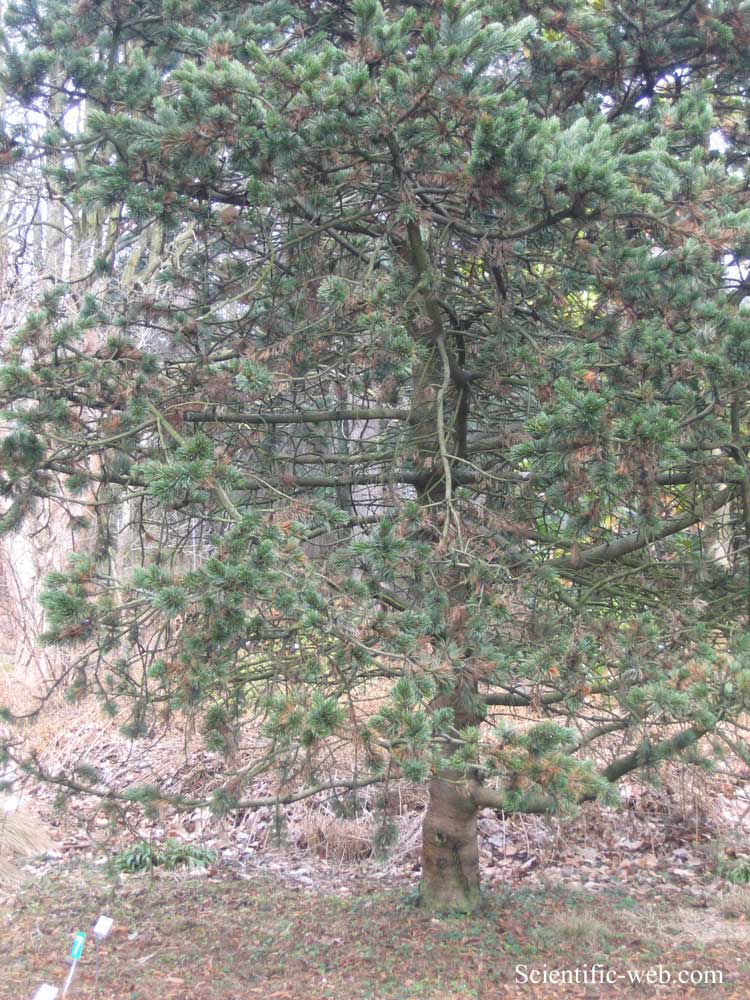Pinus aristata, Photo: Michael Lahanas Cladus: Eukaryota Name Pinus aristata Engelm. Vernacular names
* USDA, NRCS. 2006. The PLANTS Database, 6 March 2006 (http://plants.usda.gov). Data compiled from various sources by Mark W. Skinner. National Plant Data Center, Baton Rouge, LA 70874-4490 USA. * Parry & Engelm., Amer. J. Sci. Arts ser. 2, 34:331. 1862 --------- Pinus aristata is a species of pine native to the United States. It appears in the Rocky Mountains in Colorado and northern New Mexico, with an isolated population in the San Francisco Peaks in Arizona. It is usually found at very high altitudes, from 2500-3700 m, in cold, dry subalpine climate conditions, often at the tree line, although it also forms extensive closed-canopy stands at somewhat lower elevations. It is a long-lived tree, though not attaining the longevity of Pinus longaeva. The oldest known tree, which grows high on Mount Evans in Colorado, was found to have at 2,435-year tree ring record.[1] However, trees rarely live over 1,500 years. This species was previously described as a subspecies of Pinus balfouriana (Pinus balfouriana aristata). Pinus aristata is currently regarded as one of three closely related species known as bristlecone pines and is sometimes named as the Rocky Mountains, or Colorado, bristlecone pine . In addition to its informal and regional names, the trees are referred to as the Bristlecone, Foxtail or Hickory pine. Pinus aristata is by far the most common of the bristlecone pines in cultivation, where it is a very attractive slow-growing small tree suitable for small gardens in cold climates. Even so, it is never as long-lived as in the wild, typically living less than 100 years before it succumbs to root decay in the warmer, moister conditions prevalent in most inhabited places. References and external links 1. ^ Moore, Gerry; Kershner, Bruce; Craig Tufts; Daniel Mathews; Gil Nelson; Spellenberg, Richard; Thieret, John W.; Terry Purinton; Block, Andrew (2008). National Wildlife Federation Field Guide to Trees of North America. New York: Sterling. p. 823. ISBN 1-4027-3875-7. Source: Wikispecies, Wikipedia: All text is available under the terms of the GNU Free Documentation License |
|

